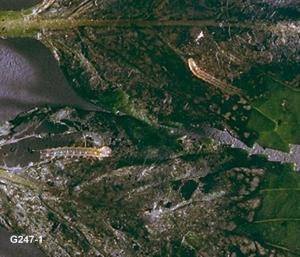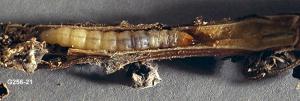|
MINT ROOT BORER LIFE CYCLE AND BIOLOGY |
|||||
CONTENTS |
Mint root borer, Fumibotys fumalis, overwinters as a prepupa within an earthen cell 1/2 to 1 1/2 inches below the soil surface. Pupation occurs within the cell during April and early May. Adult emergence begins in June and early July, continuing through the summer until early August (Berry, 1974). Peak emergence occurs during July. Females deposit eggs that resemble tiny scales along the leaf veins on both lower and upper surfaces. Each female can deposit 100 to 200 eggs during a 1 to 2 week period. Eggs hatch in 5 to 10 days, and first-stage larvae feed on leaf surfaces for 1 or 2 days before dropping to the soil surface to tunnel into rhizomes at the bases of buds. Individual larvae feed in rhizomes for 70 to 80 days during August, September, and early October. They emerge from rhizomes and construct earthen cells in October in which to overwinter. There is a single generation each year. The mint root borer occurs on peppermint and spearmint in all growing areas in the Northwest (Berry, 1974; Pike et al., 1988). Run the degreee-day development model to determine development of mint root borer in your area.
|



